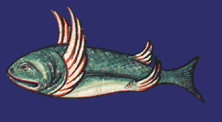In City of Bits William Mitchell writes about different types of virtual spaces and how they draw on real spaces. But what models do we have for hybrid spaces – institutions that are designed to have both physical and virtual extension? How do we think through what we can make if we were to design a new research learning space both for information technology and through it?
In chapter 4.6. Schoolhouses / Virtual Campuses Mitchell draws on Jefferson’s design for the University of Virginia. Jefferson’s “academical village” was designed to bring students and faculty together in a place of residence and learning. What do we want to bring together in a new media village?
Continue reading Academical Village
